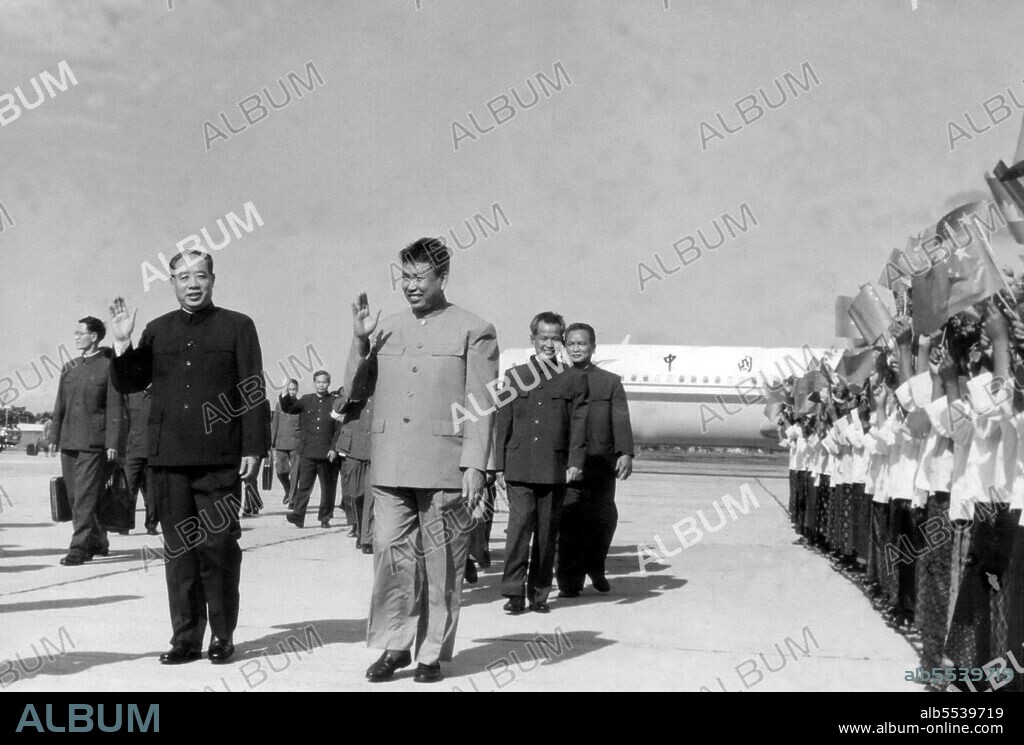alb5539719
Cambodia: The Khmer Rouge top leadership at Pochentong Airport welcoming a Chinese delegation, c. 1976.

|
Add to another lightbox |
|
Add to another lightbox |



Buy this image.
Select the use:

Title:
Cambodia: The Khmer Rouge top leadership at Pochentong Airport welcoming a Chinese delegation, c. 1976.
Caption:
Pol Pot (centre, front) followed by Khieu Samphan (centre right) and Nuon Chea (rear, right). The Khmer Rouge, or Communist Party of Kampuchea, ruled Cambodia from 1975 to 1979, led by Pol Pot, Nuon Chea, Ieng Sary, Son Sen and Khieu Samphan. It is remembered primarily for its brutality and policy of social engineering which resulted in millions of deaths. Its attempts at agricultural reform led to widespread famine, while its insistence on absolute self-sufficiency, even in the supply of medicine, led to the deaths of thousands from treatable diseases (such as malaria). Brutal and arbitrary executions and torture carried out by its cadres against perceived subversive elements, or during purges of its own ranks between 1976 and 1978, are considered to have constituted a genocide.
Credit:
Album / Pictures from History/Universal Images Group
Releases:
Image size:
5000 x 3378 px | 48.3 MB
Print size:
42.3 x 28.6 cm | 16.7 x 11.3 in (300 dpi)
Keywords:
AGRARIANISM • ASIA IMAGES • ASIA PICTURES • ASIA • ASIAN IMAGES • ASIAN PICTURES • ASIAN • AUTARKY • BARBARISM • CAMBODIA • CAMBODIAN • COMMUNISM • CRIMES AGAINST HUMANITY • DEMOCRATIC KAMPUCHEA • DK • FAMINE • GENOCIDE • GUERRA • HISTORIA UNIVERSAL • HISTORIA • HISTORICAL IMAGES • HISTORICAL • HISTORY IMAGES • HISTORY PICTURES • HISTORY • HISTORY. • HUNDRED YEARS WAR • INDOCHINA • KAMPUCHEA • KAMPUCHEAN • KHMER ROUGE • KHMERS ROUGES • MAOISM • MURDER • PEASANT REVOLUTION • STARVATION • STARVING TO DEATH • WAR • WARFARE • WARS
 Pinterest
Pinterest Twitter
Twitter Facebook
Facebook Copy link
Copy link Email
Email
